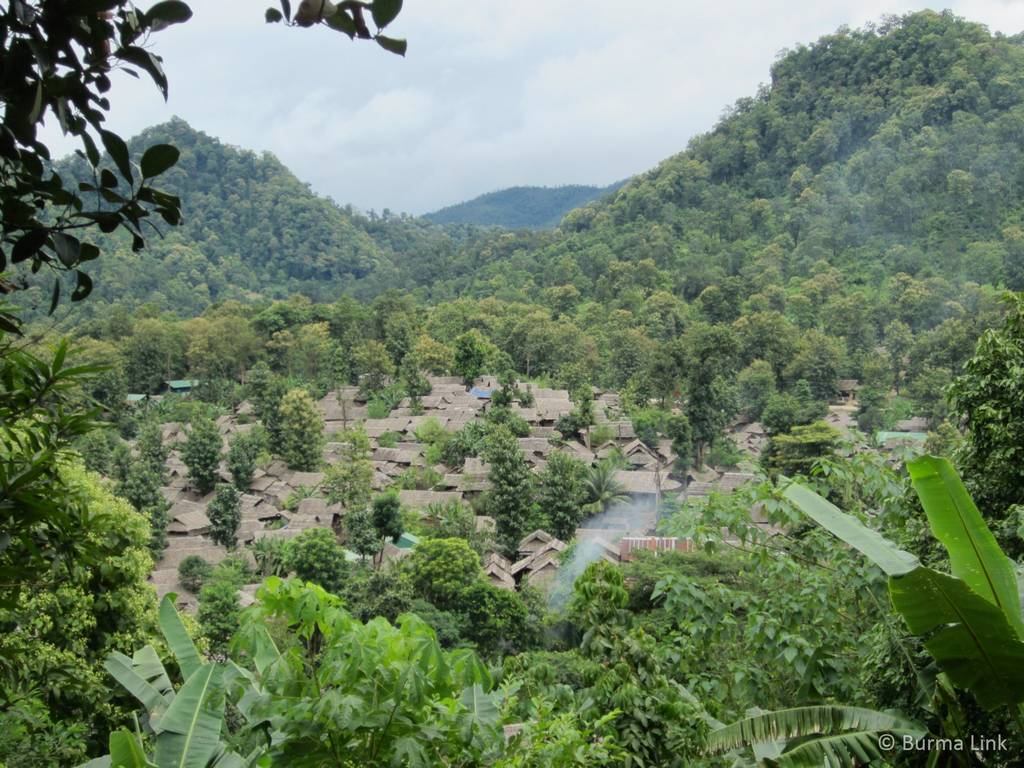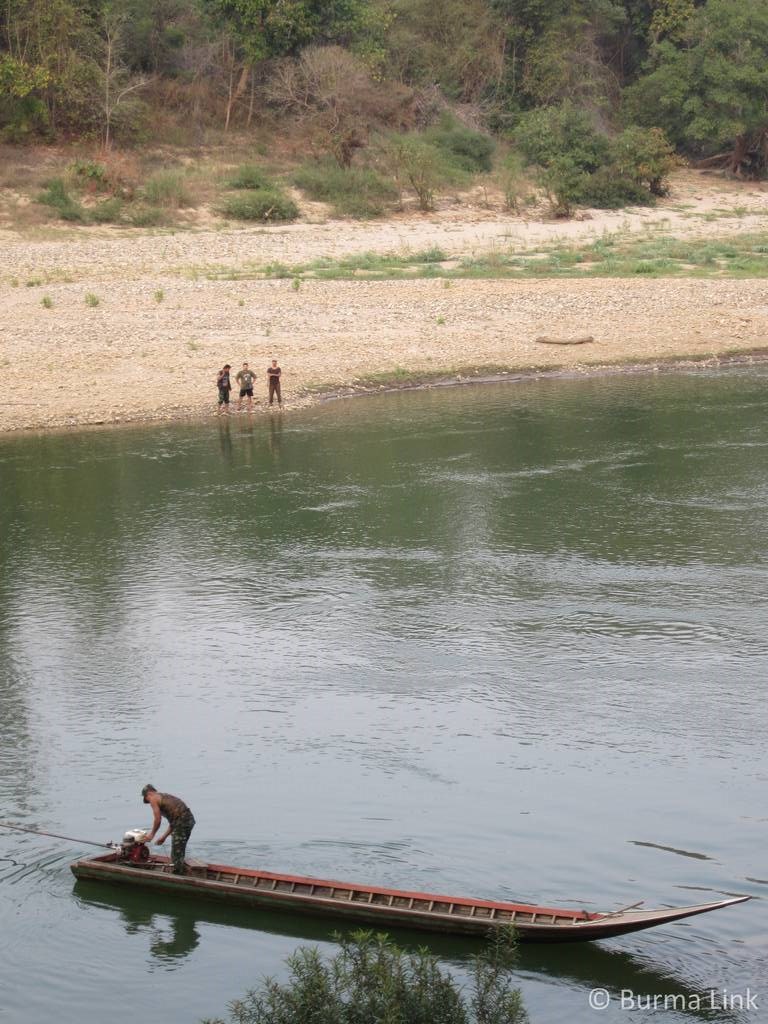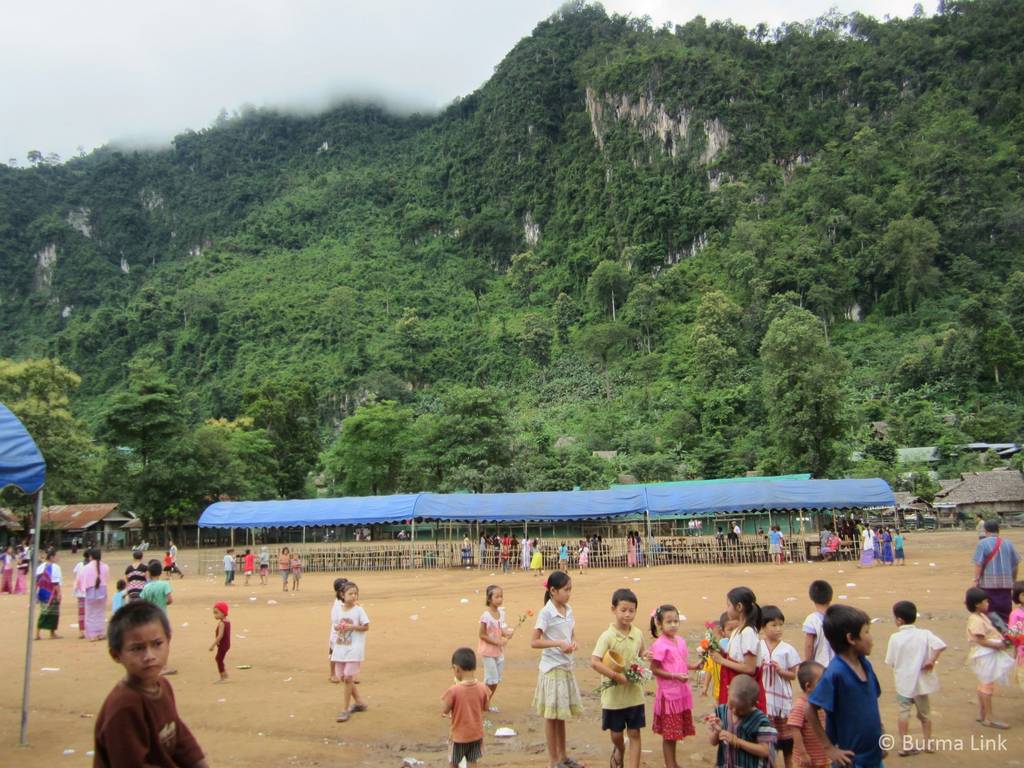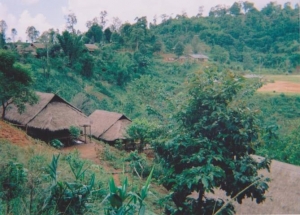The conflict started with the Karen armed struggle for equality and self-determination in 1949 and quickly spread all over the country hand in hand with the growing subjugation of ethnic areas by the government. In the 1960s, the situation went from bad to worse as Ne Win took over the government in a military coup, established an authoritarian regime, and began a massive counter-insurgency campaign ‘Four Cuts’ that targeted civilian populations in an effort to defeat the ethnic opposition armies (for more detailed description on ethnic conflict, see History of Armed Opposition). At the time, the Karen National Union (KNU), and its armed wing Karen National Liberation Army (KNLA), was arguably the most significant of Burma’s ethnic opposition groups, controlling large areas of territory across the Karen State and its adjacent areas, including villages near Rangoon. Shan, Karenni, Mon, and other ethnic nationalities also controlled much of their traditional land along the border for decades. Eventually, a series of Burma Army attacks pushed KNU troops back towards the Thai border, and in 1984, a massive and brutal Burmese offensive in eastern Burma drove 10,000 Karen refugees into Thailand’s Tak Province (see e.g. TBC, 2012b). This marked the beginning of the refugee outflow from Burma into Thailand.
| FOUR CUTS |
|---|
| The ‘Four Cuts’ strategy aims to cut off the four main links – food, finance, intelligence and recruits – between civilians and ethnic armed opposition forces by a campaign of non-stop military harassment. Large areas were declared ‘free-fire’ zones, and entire communities were forced to move to fenced areas subjected to tight military control. Anyone trying to remain in their homes was shot on sight. Tens of thousands of communities were destroyed by the Four Cuts operations. |
In 1984, according to TBC (2004), the refugees and the NGOs that worked with them thought that the Burma Army would retreat after the dry season, and most refugees believed that they could return to their homeland soon. These hopes were soon crushed as it became clear that the Burma Army had no plans on retreating, and attacks continued. After the 8888 uprising taking place in Burma in 1988, around 10,000 student activists fled government persecution to the Thailand-Burma border, and refugees realised there was no going back. Whilst being a huge blow to the refugees, this was also the first time that alliances were made between ethnic and pro-democracy movements; the Burman students were now exchanging stories with the ethnic people about their common enemy (TBC, 2004).
“For the first time in Burma, there was a connection between the democracy issue and the ethnic issue. Before this, Ne Win had been successful in persuading people that Burma was fighting a war with insurgents who were trying to tear the country apart… The international community had pretty much accepted that version and the ethnic groups had got very little sympathy”. (Jack Dunford, the Executive Director of TBC 1984-2012; TBC, 2004, p. 22)
Burma Army attacks and associated refugee outflows continued and in 1989, a fierce attack in Karenni State drove the first large inflow of Karenni refugee across the border to Mae Hong Son Province in Thailand (TBC, 2004). Although the government signed ceasefires with several non-state armed groups in the 1990s, conflict and abuses continued and refugees kept crossing the border to Thailand.
By the 1990s, the ethnic and pro-democracy organizations on the border had become a fairly united front of opposition that shared their headquarters with the KNU in Manerplaw, Karen State. Undoubtedly the biggest blow to the border groups and the KNU took place in 1995 with the fall of Manerplaw. This huge setback seemed to be a result of clever psychological warfare by the regime. It is widely believed that the Burma Army exploited grievances among a group of Buddhist Karen, who were unhappy with the Christian KNU leadership and broke away to form the Democratic Karen Buddhist Army (DKBA). The DKBA quickly aligned with the government troops and attacked Manerplaw. These events were enormous setbacks to the whole opposition movement and significantly weakened the Karen armed resistance against the regime.
By mid-1990s, refugees in the camps began feeling increasingly unsafe, as the DKBA, supported by the Burma Army, launched several offensives to the refugee camps:
“We used to be so scared all the time… We had a system in the night of hitting bamboo to raise the alert. You would lie awake all the time, afraid of every little sound in the dark. When we were attacked you had to run out into the dark with some food and wait in the forest until dawn”. (K’Nyaw Paw, 23, then a teenager in the camp; TBC, 2004, p. 26)
Noe Myint, a KNLA soldier, described an attack in Baw Naw camp saying that most of the 400-500 houses, including his, were burnt down by the DKBA, and one young girl died in the fire (Burma Link, 2014a). The DKBA also attacked Mae Ra Ma Luang, burning down the TBC rice store as well as 170 houses, killing one child and two adults. In 1997, the DKBA attacked Wang Kha (Huay Kaloke) camp near Mae Sot, setting fire to about 60% of the camp and forcing refugees to flee to the jungle. The same year, three people were killed and four young girls seriously injured in Mae La camp attack (TBC, 2004). It is believed that the DKBA was not targeting the civilians, most of whom were Karen, but the KNLA resistance that was operating from the camps. For the refugees, however, the attacks meant living in constant fear of soldiers of their own ethnicity, and under increasing restrictions. Following the attacks, the village-type camps were reorganised and merged into large camps that became more and more dependent on outside aid.
In 1996 and 1997 thousands of Shan were fleeing huge relocations programs in the Shan State that were undertaken in accordance with the government’s Four Cuts Policy; over 300,000 people from over 1,400 villages were forced out of their homes into relocation sites (SHRF & SWAN, 2002). Shan refugees in Thailand remain in a particularly vulnerable position as they are not recognised by the Thai government. There is only one Shan refugee camp, Kuang Jor, housing about 500 people, but it is not under the protection of the UNHCR. The recognised camps had by 1997 reached a population of over 100,000, excluding the Shan and thousands of others who lived outside the camps as undocumented migrants.
In 1997, the Burma Army launched a huge dry season offensive and for the first time in history, had access to and control over the entire border region. Sadly with the help of the Karen army DKBA, ethnic nationalities no longer controlled any significant swathes of territory (TBC, 2004). Conflict and abuse continued, and by 2006, the refugee numbers in Thailand topped 150,000 (TBC, 2012b).

View of Mae La refugee camp, the largest of the camps on the border and home to about 45,000 refugees. (Photo: Liz Bordo)
New tensions ensued on the border following the government’s demand, enshrined in the 2008 Constitution, that all ceasefire groups must transform into the Border Guard Force (BGF) under the command of the Burma Army – Most groups denied the call and many longstanding ceasefire agreements unravelled. Most DKBA soldiers refused to complete their transformation into BGF units and ended their 16-year ceasefire, siding with the KNU for the first time since their breakaway in 1995. Many observers were pleased to see the KNU welcome their Karen brothers back to their side to oppose the government, despite the dreadful history between the two armed groups. During 2010 and 2011, intensified fighting between the Burmese military and ethnic armed groups along the border forced an estimated 20,000 refugees into Thailand.
Fighting also broke out in other parts of the country. In March 2011, the Burma Army attacked the Shan State Army-South (SSA-S), breaking a ceasefire reached in 1989. Ensuing fighting displaced an estimated 30,000 civilians. In June 2011, war broke out between the Burmese army and Burma’s second largest non-state armed group, the Kachin Independence Army (KIA), ending a ceasefire signed in 1994. Although in smaller numbers than the groups inhabiting areas near the Thai border, many ethnic Kachin have also escaped the conflict to Thailand.
In the second half of 2011, the government began negotiating new ceasefires with several armed opposition groups (see e.g. Human Rights Watch, 2012a). Initial peace agreements were signed with most of the prominent ethnic armed groups, including a historical ceasefire agreement with the KNU/KNLA. Sporadic fighting and skirmishes have, however, been reported since (e.g. Saw Yan Naing, September, 2014; Shan Herald, September, 2012; TBC, 2012b, 2013a).
After the new nominally civilian government took office in March 2011, some political developments begun to take place in Burma. The initial hopes have, however, begun to shatter over the last four years as human rights abuses such as land confiscation, forced evictions, rape, sexual assault, extrajudicial killings, and torture continue with impunity, particularly in ethnic areas (KHRG, 2014a, ND-Burma, 2015a). While the prevailing narrative is that Burma has set off on a road to democratic reform, the process is increasingly rocky and many crucial issues remain unresolved. Conflict also persists with 248 armed clashes recorded in 2014 alone (Myanmar Peace Monitor, 2015). In October 2014, the fighting near the Hat Gyi Dam site in Karen State led to the displacement of over 2,000 villagers as they fled the fighting and attempted to cross over to Thailand (KRW, 2014). Recent funding cuts along the Thailand-Burma border and talks of refugee repatriation form added concerns for the displaced people of Burma.
Updated May 1, 2015
Continue to Displaced in Thailand



